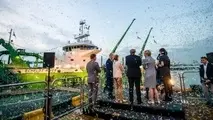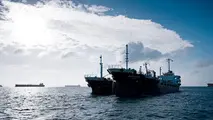Maritime’s Search for the Holy Grail of Alternative Energy
The maritime industry has worked with a single fuel source for over a century and with the rush to meet emission standards in both domestic and foreign markets, adapting to the current list of alternative fuels is going to present significant problems. Each market has its issues whether bluewater, brownwater, coastal, foreign or domestic.

The maritime industry has worked with a single fuel source for over a century and with the rush to meet emission standards in both domestic and foreign markets, adapting to the current list of alternative fuels is going to present significant problems. Each market has its issues whether bluewater, brownwater, coastal, foreign or domestic.
Chose any of the larger global shipbuilding yards and the basic bluewater ship design will include a large two stroke combustion engine.
To remove that single propulsion system from current ship construction to meet emission standards would be devasting to shipyard profitability.
First, we need to realize the current emission time frame will not be met and second ship orders will continue to include this type of propulsion well into the near future.
The climate change and ship emission discussion reach as far back as 2012, with an analysis of ammonia as a military fuel. Doctor William Ahlgren defined the transition away from fossil fuels as a “Dual Fuel Strategy”. The analysis coupled fossil fuel energy sources with electric power and the research presented three strategies for an alternative energy future:
- a hydrogen economy coupling electric power and hydrogen fuel,
- a complete electric economy, and
- a dual fuel strategy allowing an introduction of liquid renewables.
The “Dual Fuel Strategy” was based upon the ability of liquid ammonia or methanol to be compatible with the current energy infrastructure. Shipbuilding embraced the concept and continued the development of two stroke combustion by first incorporating dual fuel LNG. Where emission discussion and regulatory goals spoke to ZERO, the strategy was a concept of gradual “transition”. Zero could not be reached without the “electrical” component and few if any of the global builders were prepared to take on battery and energy storage at the power levels required to remain competitive.
There are literally hundreds of reports of “dual fuel” deliveries to date. However, the “dual” at this point in the transition has been an alternative fuel and fossil fuel mixture and there are reasons why.
The simple “Holy Grail” mantra has been hydrogen. Not so difficult to understand as all of future energy alternatives have a hydrogen bond. Begin with determining the actual fuel density and available energy in BTU’s new alternative fuels produce. Whether the choice is ammonia, methanol, LNG, bio or hydrogen, none meet the density and energy of simple marine diesel oil. In fact, most provide 50% or less. Add that none meet “zero” in their current state and will not until delivered in a proposed “green” form.
The density problem alone creates issues in ship construction. Less energy requires larger fuel tanks and the necessity to carry more fuel. More fuel, less cargo – less cargo, smaller profit. And the problem continues with the placement of the new fuel tanks and how stability, stowage, trim and draft are affected. The issue may be solved with maintaining current levels of fuel inventory and increasing the number of bunkering operations. A problem associated with the alternative fuel selected and whether the ships trading pattern provides the infrastructure to confirm the fuel is available at bunkering ports. You will find the majority of current ports cannot make that claim for methanol, hydrogen, ammonia or LNG. Add the pilot fuel requirement during ignition and the marine diesel oil being the actual “dual” and we need two types of fuel tanks.
With many new construction projects attempting to meet emission regulations, the fact that we continue with a single large two stroke combustion engine, provides the most difficult hurdle. The “dual fuel” description will be an alternative fuel and a fossil fuel through a long transition period.
Long enough that the Korean shipyards believe “carbon capture” will be the next step to keep the standard design alive. The transition to LNG in the combustion engines was over two decades and its use continues to grow. Now take into account the first large two stroke Ammonia combustion engine only completed a successful 25% to 100% load operation on a test bed in February of 2025 and the “zero” light at the end of the tunnel gets dimmer. The end of the transition period is a distance away and we will still be bunkering diesel oil in years to come.
Safety hazards also exist and require major revisions to ventilation, personnel protection and training. Ammonia vapor is toxic and its distribution to and from the propulsion source is a major concern. Ammonia has a higher flash point, albeit a narrower explosive range when mixed with air. The atmospheric calculations to circumvent ignitions or explosion are far different than standard marine diesel or black oil.
On the hydrogen side of fuel, the density of compressed hydrogen adds difficulty and expense to the transportation of the gas to the vessel and the storage when bunkered. To liquify Hydrogen and utilize it cryogenically (similar to Ammonia or LNG), adds another significant cost for both liquefaction and regasification. With all of these new decisions we need to support the “Well to Wake” initiative – using energy to create the “new energy” need to be included in the final emissions calculation as does the major cost disruption to ship construction.
The smaller workboat, tug and ferry markets are much farther ahead in the Holy Grail quest to the point that they can almost say “you have chosen wisely”. Many of the four stroke engine manufacturers are producing new products ranging from methanol capability to complete fuel agnostic engines.
Cummins has received Approval in Principle for the methanol ready QSK60 IMO II/III engines with power ranges from 2000 – 2700 horsepower. Others projects have taken on producing hydrogen on board and incorporating fuel cell, EV Hybrid and battery to meet emission goals. This coastal workboat and ferry market has moved past dual fuel and into electrical propulsion revisions as predicted in 2012.
Beyond the ship operation and propulsion issues, we need also to look carefully at the actual fuel suppliers and bunkering companies existing tonnage. With the cruise industry embracing Dual fuel LNG we have seen continued orders and supply of LNG bunkering barges and vessels to support the LNG deliveries. What is missing in the US markets is the necessary “bunker barge” tonnage to deliver ammonia, methanol, or bio fuels. The development of this infrastructure goes well beyond shoreside storage capability in the bunker ports. Specific tank coatings applied to the barges are required for certain Bio fuels or methanol along with the chemical base cargoes need to blend the bio components. Ammonia will require similar cryogenic liquefaction as required for LNG. Advanced polymer coatings such as “Marine Line” will be needed for methanol, ethanol or Fatty Acid Methyl Esters. The foreign fleets can deliver these blends and chemicals into the U.S. However, the domestic fleet must now build and respond to the new cargoes in order to meet distribution demand.
The quickest route for an operator to maintain a “Carbon Intensity Indicator” rating on existing vessels will be to move to Bio. That move will again support the dual fuel strategy and allow an owner or operator to claim an emissions reduction. Each small effort helps us reach our climate goals. Beyond the 2012 analysis lies only Nuclear to reach “Zero” and make no mistake, the discussion of how that propulsion change will affect ship construction is already taking place.


